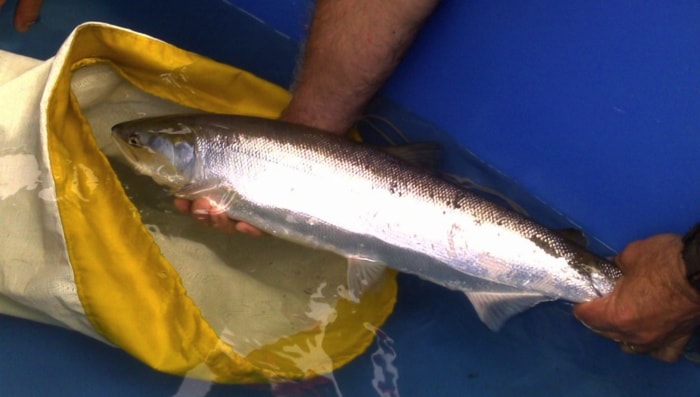Metro Vancouver is spending $500,000 a year on fish ferries and other initiatives to increase salmon populations in its watersheds.
The number raised eyebrows among some directors at a briefing Friday.
Port Coquitlam Mayor Greg Moore said he also wishes B.C. Hydro was as keen to help with flood control along the Coquitlam River as it apparently is to assist with the reintroduction of sockeye salmon to the Coquitlam reservoir.
"It was atrocious to deal with them," he said, adding Hydro officials had to be "dragged kicking and screaming" into discussions on whether dredging, higher dikes or other options can prevent flooding of properties along the river.
Moore wanted to know how much partners like B.C. Hydro and the Department of Fisheries and Oceans pay towards Metro's fishery project costs.
Other directors say Metro must continue to exercise caution to avoid contaminating the region's drinking water reservoirs.
The risk is salmon that spawn and die in a reservoir will rot and attract bears, which then foul the water and introduce pathogens.
Salmon themselves could transport contaminants from the ocean up to the reservoir.
"It's something we need to look at – cautiously," said Surrey Coun. Marvin Hunt, who sits on Metro's water committee.
The Coquitlam reservoir has recently been reopened to sockeye salmon, which have begun to return in small numbers. They're trapped and trucked from the base of the dam to Coquitlam Lake to spawn but fishery advocates and the Kwikwetlem First Nation want a fish ladder built to make it easier and accelerate the recolonization of the reservoir.
Metro staff say a three-year study is underway to gauge conditions in the Coquitlam reservoir and help assess how big a sockeye population it could accommodate without risking the quality of the drinking water, which supplies the eastern half of Metro Vancouver.
But Hunt said that may be hard to determine, adding it's "highly debatable" how many sockeye should be permitted to go upriver past the dam.
"Our goal is to have clean, safe water for our citizens," he said.
Coquitlam Mayor Richard Stewart said he's not concerned about the re-introduction of sockeye, noting Metro bars access to its reservoirs and enjoys far superior water quality as a result.
"I know lots of communities around the world where their public beach is in their water reservoir – their swimming pool, their water skiing is in their drinking water reservoir," Stewart said. "That's certainly not the case in Metro Vancouver."
For advocates, reintroduction of the salmon run rights a historic wrong.
Coquitlam Lake's sockeye were stranded behind the dam when it was built in 1914.
They turned into land-locked kokanee that for nearly a century never tasted salt water.
In the last 10 years, some kokanee smolts used a channel through the spillway to escape down the Coquitlam River to the ocean.
Since 2007, they've started to come back as adult sockeye.
The numbers are so far small – just 11 adults returned in the best year to date to be carefully trapped and released by hand into the reservoir.
Belcarra Mayor Ralph Drew thinks lots more sockeye can come back without risking water safety.
"I think there's plenty of room to return to historic levels without compromising the water supply," he said. "Historically there's very low nutrient levels in the Coquitlam watershed just because of the mineralization. That has always regulated the total population of fish there."
Metro also plans to install a webcam in a fish trap in the Coquitlam River so online viewers can watch for the returning sockeye.
The regional district also puts considerable effort into ferrying coho salmon around the Cleveland Dam, which holds back the Capilano reservoir.
About 40,000 coho salmon smolts and 400 juvenile steelhead are now trapped in the reservoir each year and released below the dam.
Not all are intercepted, however, and some fish still go over the spillway and die in the steep plunge to the base of the dam.
